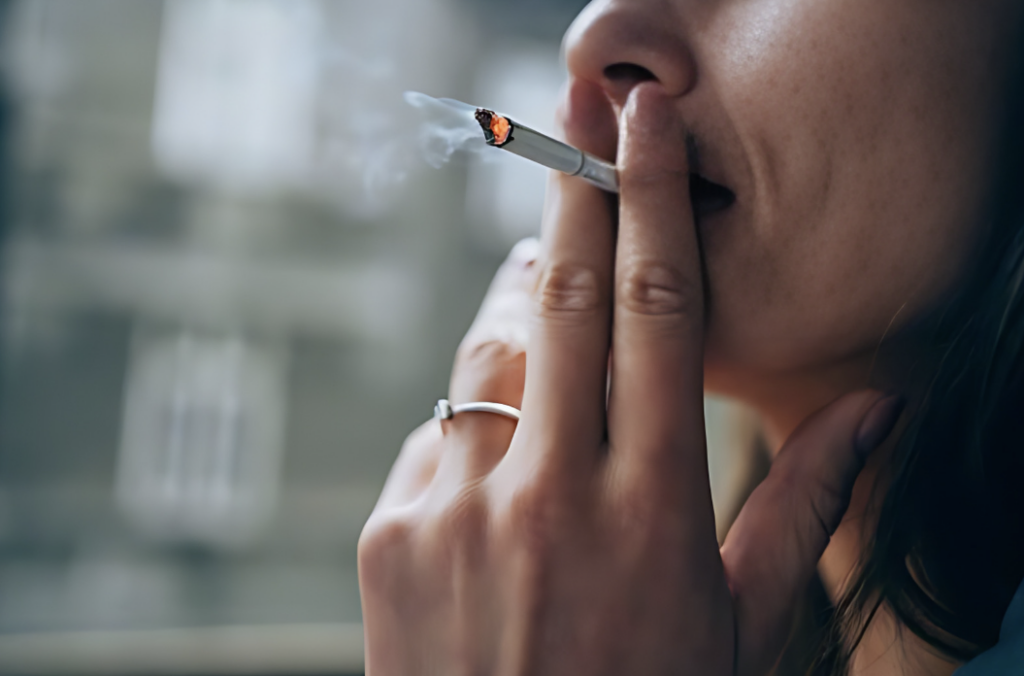Health Conditions
How Smoking Can Lead to Skin Fungal Infections
Smoking is a notorious habit that has been shown to have a wide range of negative effects on our health. The negative effects, which range from cardiovascular disease to lung cancer, are widely known. However, there is another potential impact that is sometimes overlooked when it comes to smoking: an increased risk of skin fungal infections. Yes, you read it correctly. Smoking can increase your susceptibility to these uncomfortable skin illnesses.
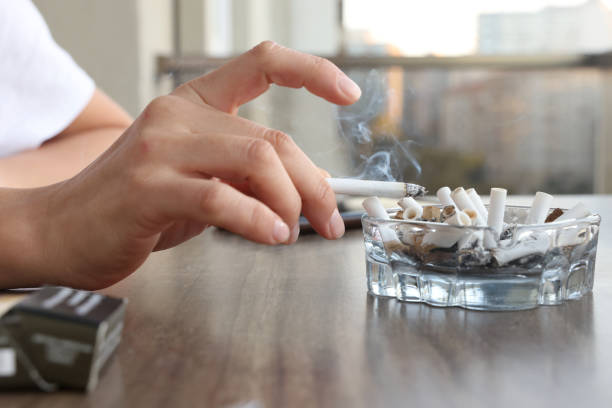
What is Smoking?
Smoking is defined as the act of inhaling and exhaling smoke created by the combustion of tobacco or another chemical. It is a prevalent habit among millions of people around the world. Smoking tobacco contains hazardous substances such as nicotine, tar, and carbon monoxide, all of which can harm the body.
Smoking has an impact on many different organs and systems, including the skin. The skin is the body’s biggest organ and serves an important role in shielding us from external hazards. However, smoking can impair the health and integrity of our skin, leaving it more vulnerable to infections, particularly fungal infections.
Effects of Smoking on the Skin
When it comes to our skin, we often focus on exterior issues such as UV rays and pollution. However, evidence suggests that smoking can weaken our skin’s natural defensive mechanisms, making it more susceptible to fungal infections. Cigarettes’ chemicals can weaken the immune system, disturb the balance of microorganisms on our skin, and limit its ability to combat fungal invaders.
One of the principal effects of smoking on the skin is a reduction in blood flow. Nicotine, the addictive ingredient present in cigarettes, constricts blood vessels, resulting in reduced oxygen and nutritional flow to the skin. This can lead to a dull complexion, premature aging, and slow wound healing. Furthermore, smoking stimulates the generation of free radicals in the body, which can damage the skin’s collagen and elastin fibers, resulting in wrinkles and sagging.
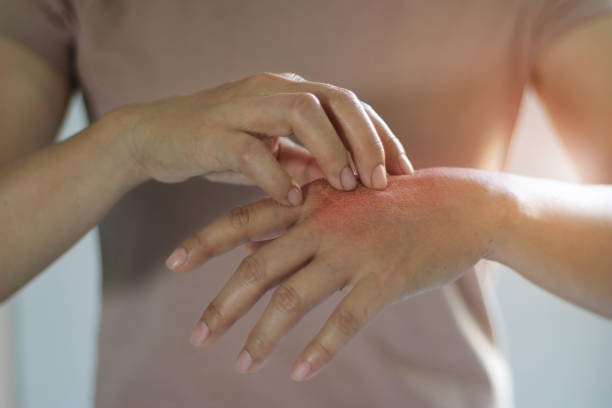
Common Types of Skin Fungal Infections
Before delving into the relationship between smoking and skin fungal infections, let’s take a deeper look at some of the most frequent types:
- Ringworm: Despite its name, ringworm is not caused by a worm but rather a fungus. It typically appears as a red, itchy rash with raised, scaly edges that resemble a ring. Ringworm can affect various parts of the body, including the scalp, feet (athlete’s foot), groin (jock itch), and nails.
- Candidiasis: Candidiasis is caused by an overgrowth of the Candida fungus. It commonly affects areas with warm and moist skin, such as the armpits, groin, and skin folds. Symptoms may include redness, itching, and a rash with white or yellowish patches.
- Tinea Versicolor: Tinea versicolor is a fungal infection that leads to the development of discolored patches on the skin. These patches can be lighter or darker than the surrounding skin and may be more noticeable after sun exposure. The fungus responsible for tinea versicolor is naturally present on the skin but can overgrow in certain conditions.
Link between Smoking and Skin Fungal Infections
Now that we have covered the fundamentals of smoking and skin fungal infections, let us look at the relationship between the two. According to research, smoking weakens the immune system, making it less efficient at fighting infections, particularly fungal ones. Cigarette compounds, like as nicotine, can decrease the immunological response, reducing the body’s ability to protect against fungal invaders.
Furthermore, smoking alters the equilibrium of bacteria on your skin. Our skin is home to a variety of bacteria, both beneficial and dangerous. These microorganisms contribute to a healthy skin barrier and guard against infections. However, smoking can disrupt this delicate balance, allowing harmful fungus to grow and cause illnesses.
A research published in the Journal of the American Academy of Dermatology indicated that smokers were more likely than nonsmokers to have fungal skin infections. The study found that smoking increased the likelihood of acquiring tinea unguium (fungal nail infection) and tinea pedis (athlete’s foot). Another study published in the British Journal of Dermatology indicated that smoking doubled the likelihood of acquiring candidiasis.

Research and Studies on the Topic
Several studies have been undertaken to examine the link between smoking and cutaneous fungal infections. These research have provided important insights into how smoking affects the skin and raises the risk of fungal infections.
In a study published in the Journal of Clinical and Aesthetic Dermatology, researchers looked at how smoking affected the skin’s natural defense mechanisms. They discovered that smoking reduced the skin’s barrier function, leaving it more susceptible to fungal infections. Furthermore, the study found that smokers had greater levels of inflammation and oxidative stress, which weakened the skin’s ability to fend off fungal invaders.
Another study published in the Journal of the European Academy of Dermatology and Venereology looked at the effect of smoking on the prevalence and severity of fungal nail infections. The researchers discovered that smokers were more likely to get fungal nail infections, and the severity of the infections was higher in smokers than in non-smokers. The study also found that quitting smoking significantly reduced the severity of fungal nail infections.
These studies, among others, give solid evidence of a relationship between smoking and skin fungal infections. The findings highlight the significance of quitting smoking in lowering the chance of developing these infections and improving general skin health.

Tips for Preventing Skin Fungal Infections
It is always better to prevent than to cure. If you smoke and wish to reduce your chance of acquiring skin fungal infections, try these tips:
- Quit Smoking: The most effective strategy to lower the risk of skin fungal infections caused by smoking is to stop smoking completely. Seek aid from healthcare professionals, join support groups, or attempt nicotine replacement therapy to successfully quit.
- Maintain Good Hygiene: Proper hygiene is essential for avoiding fungal infections. Keep your skin clean and dry, especially in sweat-prone regions. Use antifungal powders or creams as directed by a healthcare expert.
- Avoid Sharing Personal Items: Fungal infections can be transmitted through contact with diseased people or contaminated materials. To reduce the chance of transmission, do not share personal items like towels, clothing, or shoes.
- Wear Breathable textiles: Choose clothing composed of breathable textiles such as cotton, which promotes air circulation and absorbs perspiration. Avoid tight-fitting garments, which can create a warm and humid atmosphere conducive to fungal growth.
- Keep Skin Moisturized: Dry skin is more prone to cracks and fractures, which can allow fungal diseases to enter the body. Apply a moisturizer to keep your skin nourished and protected.
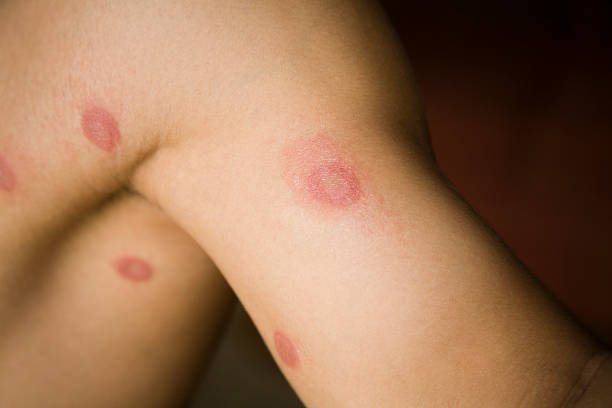
Treatment Options for Skin Fungal Infections
If you already have a skin fungal infection, prompt treatment is essential to prevent it from spreading and worsening. Treatment options may vary depending on the type and severity of the infection. Common treatment approaches include:
- Antifungal Medications: Topical antifungal creams, ointments, or powders are commonly used to treat mild to moderate fungal infections. In some cases, oral antifungal medications may be prescribed for more severe or persistent infections.
- Medicated Shampoos: For fungal infections of the scalp, medicated shampoos containing antifungal agents can be used to help eliminate the fungus and relieve symptoms.
- Nail Removal: In severe cases of fungal nail infections, the affected nail may need to be partially or completely removed to allow for effective treatment.
It is important to consult a healthcare professional for an accurate diagnosis and appropriate treatment plan tailored to your specific condition.
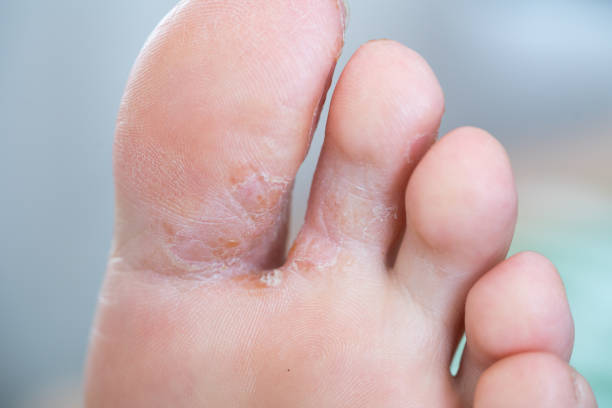
Other Factors that Can Contribute to Skin Fungal Infections
While smoking is a significant risk factor for skin fungal infections, it is not the only factor at play. Several other factors can contribute to the development of these infections, including:
- Weakened Immune System: Individuals with weakened immune systems, such as those with HIV/AIDS or undergoing chemotherapy, are more susceptible to fungal infections.
- Diabetes: Poorly controlled diabetes can increase the risk of fungal infections, as high blood sugar levels create an ideal environment for fungal growth.
- Warm and Humid Environment: Fungi thrive in warm and humid environments. Spending prolonged periods in sweaty clothes or shoes, swimming pools, and communal showers can increase the risk of fungal infections.
- Compromised Skin Barrier: Skin conditions like eczema, psoriasis, or cuts and wounds can compromise the skin’s natural barrier, making it more susceptible to fungal infections.
- Certain Medications: Some medications, such as antibiotics and corticosteroids, can disrupt the natural balance of microorganisms on the skin and increase the risk of fungal infections.
Conclusion
To summarize, smoking is not only hazardous to our lungs and hearts; it can also jeopardize the health and integrity of the skin. Cigarettes include chemicals that weaken the immune system, disrupt the balance of bacteria on our skin, and decrease our ability to combat fungal invaders. This raises the likelihood of getting skin fungal illnesses such ringworm, athlete’s foot, and candidiasis.
If you smoke and have recurrent skin problems or are at a higher risk of fungal infections due to other causes, it may be time to reconsider your habit. Quitting smoking improves your general health while also lowering your risk of developing these troublesome fungal infections.
Remember that prevention is vital. Practicing proper cleanliness, living a healthy lifestyle, and seeking immediate treatment for any skin disorders are all important measures toward keeping your skin fungus free. Consult a healthcare expert for tailored advice on preventing and treating skin fungal infections.
Trusted Health, Wellness, and Medical advice for your well-being

